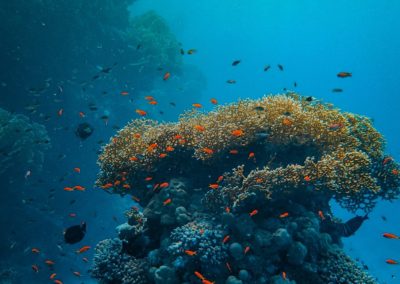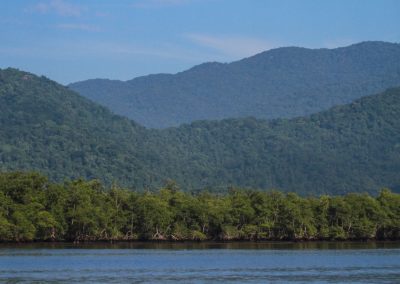Assessing surrogate performance
Background
Carolina, USA (~1900 km2). Although this region is of biological and cultural significance, privately-owned lands are extensive and contribute to a complex mosaic of urban, agricultural, and forested landscape. Despite this unique conservation challenge, local landowners, communities, and stakeholders have established a baseline network of conservation easements and protected areas, in addition to the state’s only national park.
In this study, our goal was to evaluate surrogacy patterns and mechanisms that may help to guide freshwater sampling and conservation planning efforts. Our specific objectives were to (1) quantify relationships among taxonomic and functional metrics for both fish and macroinvertebrates, (2) explore how metric dissimilarity affects freshwater conservation prioritizations, and (3) evaluate the surrogacy potential of several Marxan scenarios representing different combinations of organism groups and biotic metrics. We evaluated eight community-level measures of freshwater biodiversity, representing the taxonomic richness, biotic integrity, functional diversity, and functional redundancy of benthic macroinvertebrates and fishes. We conducted both a priori and a posteriori tests to provide a robust evaluation of surrogate performance, and explored potential trade-offs between organism group coverage and metric dimensionality. Based on generalizations that have been synthesized in the literature, we expected correlations among individual metrics to be significant, but potentially weak. With respect to a posteriori analyses, we expected the spatial variation among metrics to have a significant effect on prioritization outcomes such that metrics with more similar distributions might also have more similar priorities. Lastly, if the variation among measures of biodiversity was found to have a significant effect on prioritization outcomes, then we might expect that surrogate performance would be stronger within-taxa than between-taxa.
Scenarios
We used the conservation planning tool Marxan to develop conservation prioritization scenarios based on different dimensions of biodiversity. To achieve our final objective of evaluating surrogate performance a posteriori, we developed 6 Marxan scenarios. Our first scenario represented all eight biotic metrics. We deemed this our overall biodiversity scenario, as it captured the maximum number of biodiversity elements, given our sampling and modelling efforts, and provided coverage of fishes and benthic macroinvertebrates. The additional Marxan scenarios were subset to represent (1) all four fish metrics (Fish), (2) all four benthic macroinvertebrate metrics (Invert), (3) fish and benthic macroinvertebrate richness estimates (F-I-Rich), (4) fish species richness (F-Rich), and (5) benthic macroinvertebrate genus richness (I-Rich). By comparing these surrogate scenarios to the overall biodiversity scenario, we sought to illustrate how a basic understanding of the effects of metric dissimilarity on priority network congruence may be used to support preliminary sampling or post-hoc biomonitoring efforts.
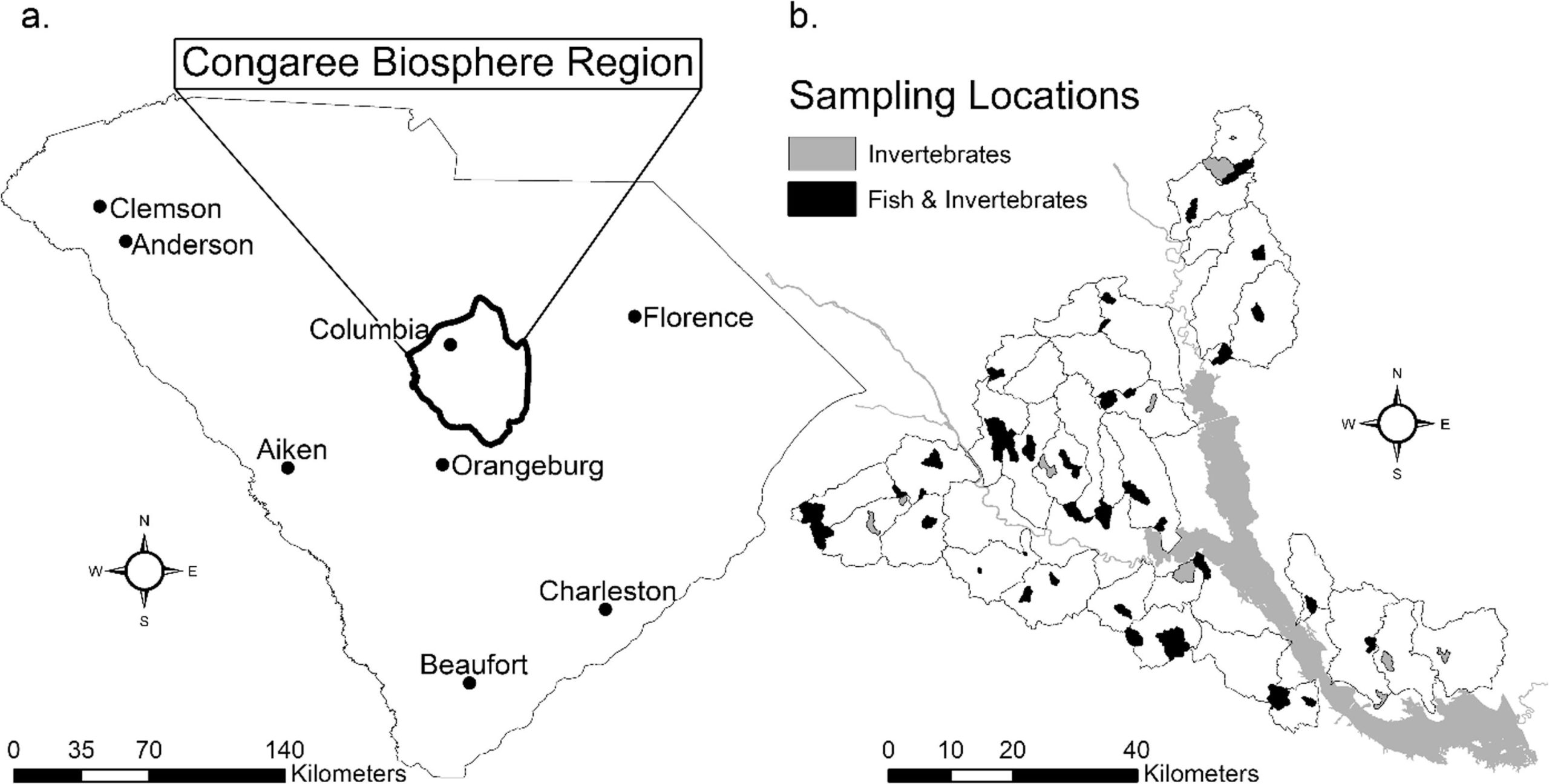
(a) Congaree Biosphere Region located within South Carolina, USA; (b) our study area, emphasizing the local catchments that were sampled (n = 48). The grey “y-shaped” area towards the center of panel b represents a floodplain boundary that is not to be mistaken for an invertebrate sampling site.
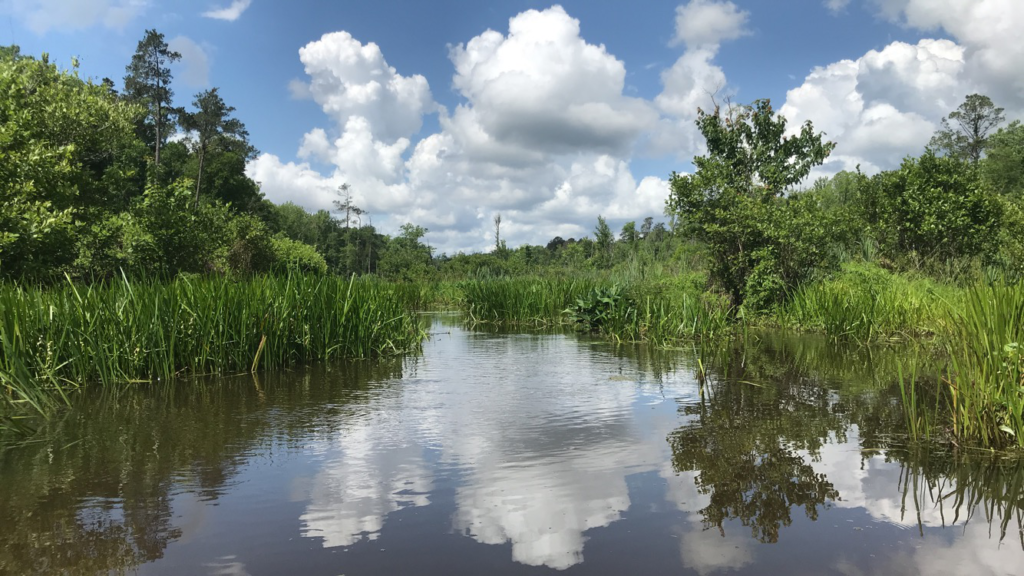
Our first two scenarios reflected real-world situations in which biotic integrity calibrations and functional traits might be available, but existing biotic datasets are limited to a single organism group. Our third scenario represented situations in which complex multimetric or multivariate descriptions of biotic integrity and functional diversity might not be available, but richness estimates exist for both organism groups. Lastly, initial field work in a region may begin by compiling species presence datasets for a single organism group, making our final two scenarios relevant to global conservation efforts in the most data-poor regions. In general, these analyses allowed us to explore trade-offs between organism group coverage and metric dimensionality, with specific implications for data collection and conservation planning efforts.
Results
Our central findings indicated that the processes driving patterns of taxonomic and functional diversity among organism groups were complementary, with direct implications for the evaluation of surrogate performance. Our results also suggest that within-taxa variation among measures of taxonomic and functional diversity may be more important to consider than the taxonomic representation of multiple organism groups. That is, we may be able to enhance the efficiency of conservation planning efforts by using available datasets in a more comprehensive way, as surrogate performance was largely mediated by the variation among metrics. Through the continued development of functional trait databases, we may be able to enhance the efficiency of data collection efforts and promote the timely and sustainable development of conservation strategies.
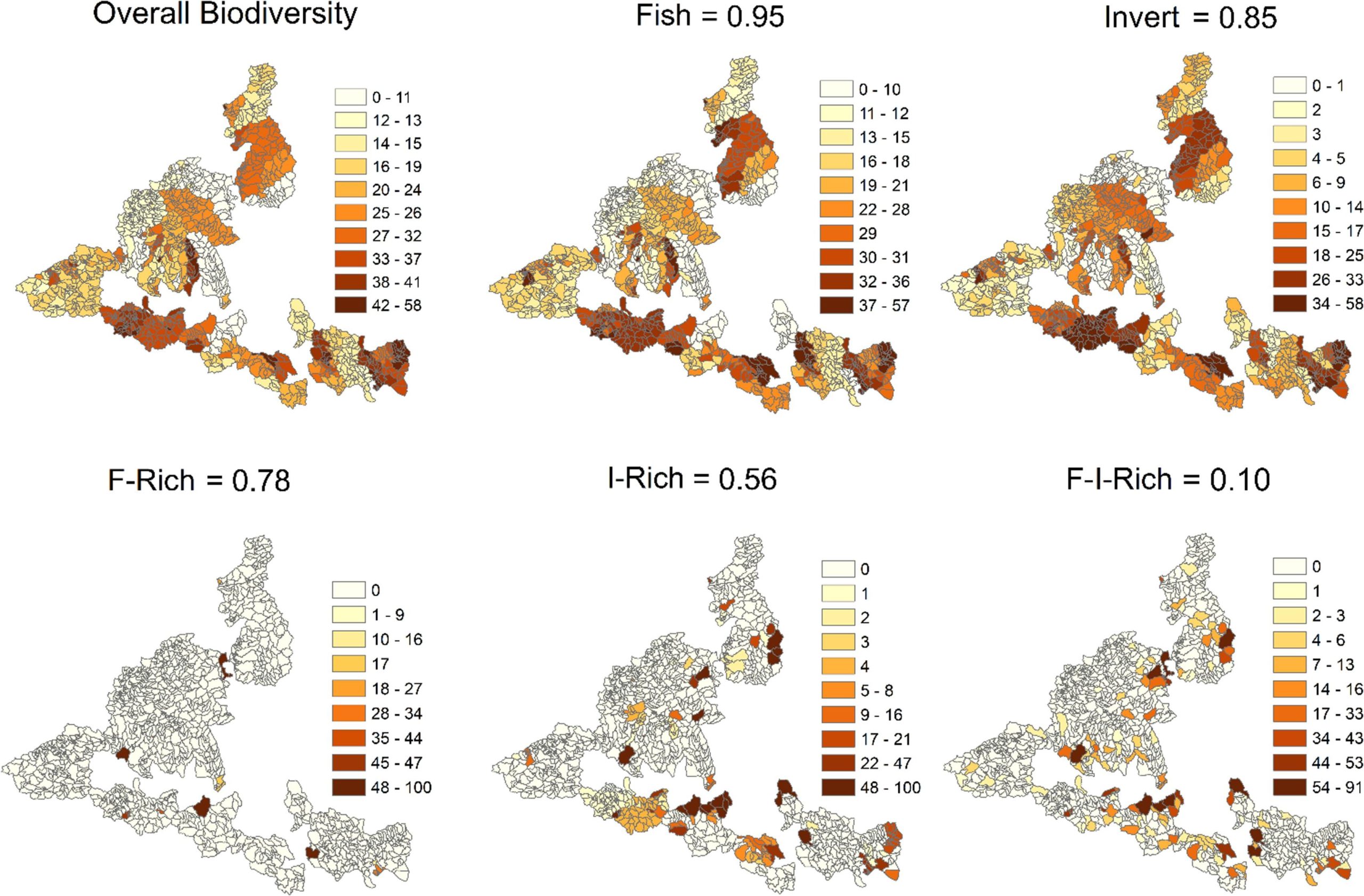
Graphical representation of the summed solution frequency distributions produced by each scenario using conservation targets of 10%; values trailing the scenario name correspond to the Spearman correlation coefficient between that respective scenario and the Overall Biodiversity scenario. All legends were standardized using a quantile classification to promote comparability between individual prioritizations.
References:
References
Brumm, Kyle J., R. Daniel Hanks, Robert F. Baldwin, and Brandon K. Peoples. "Accounting for multiple dimensions of biodiversity to assess surrogate performance in a freshwater conservation prioritization." Ecological Indicators 122 (2021): 107320.
Contact Information:



